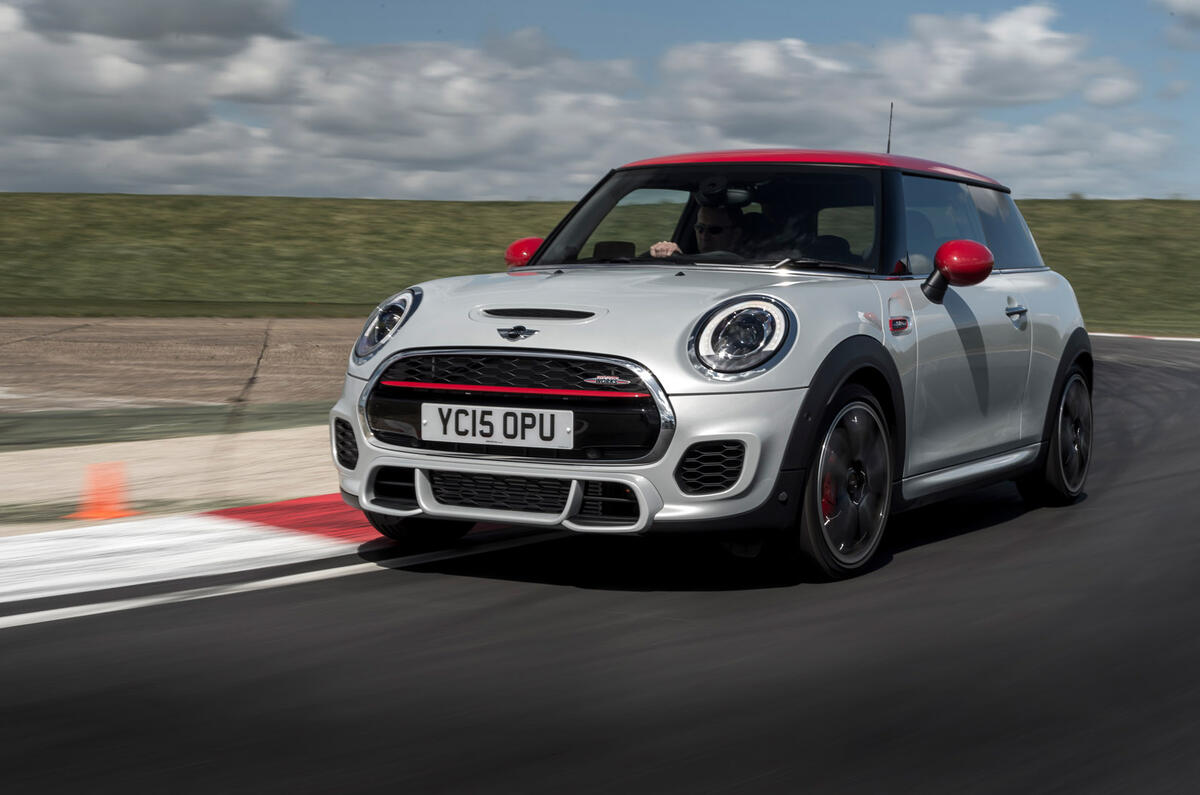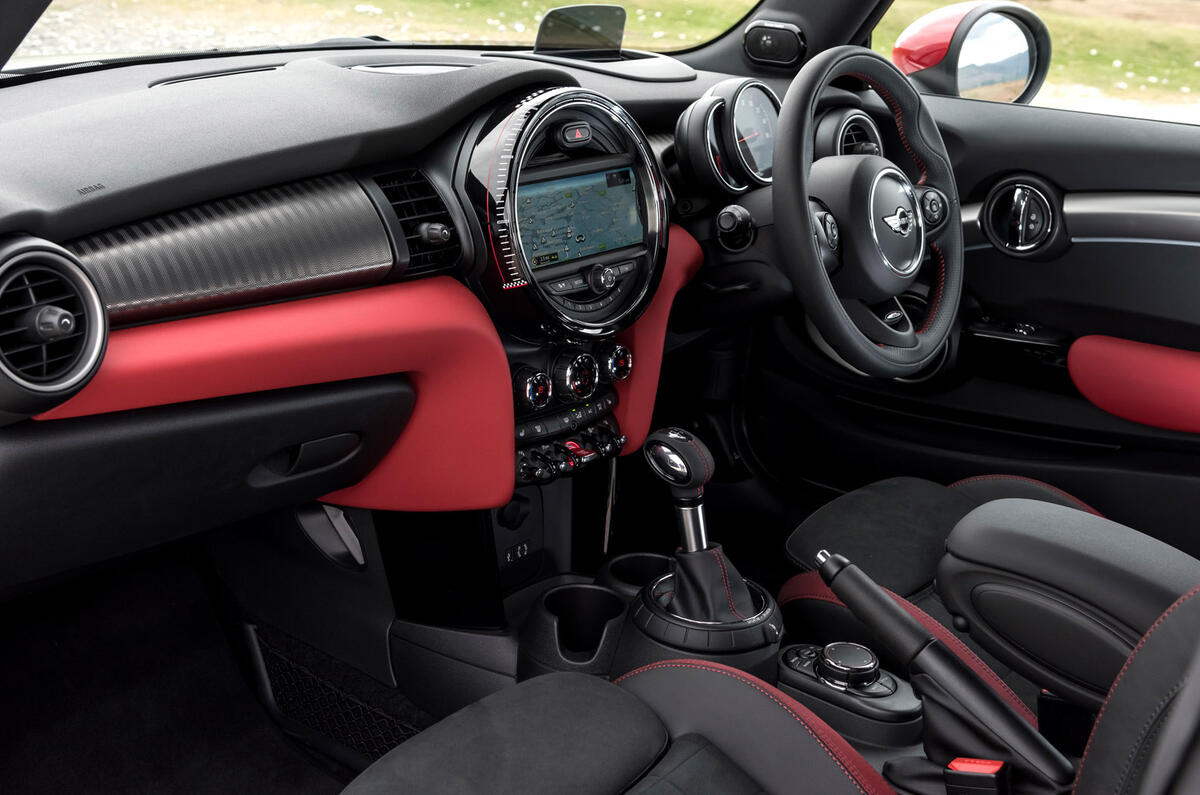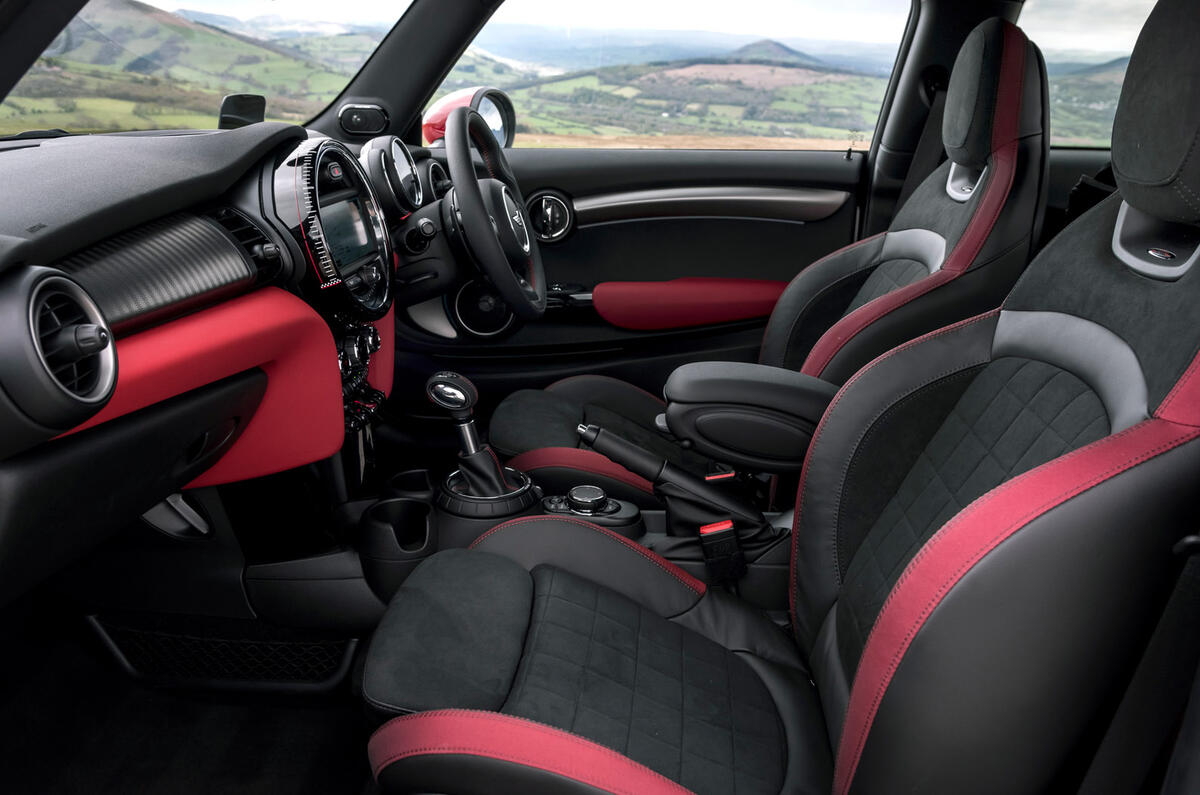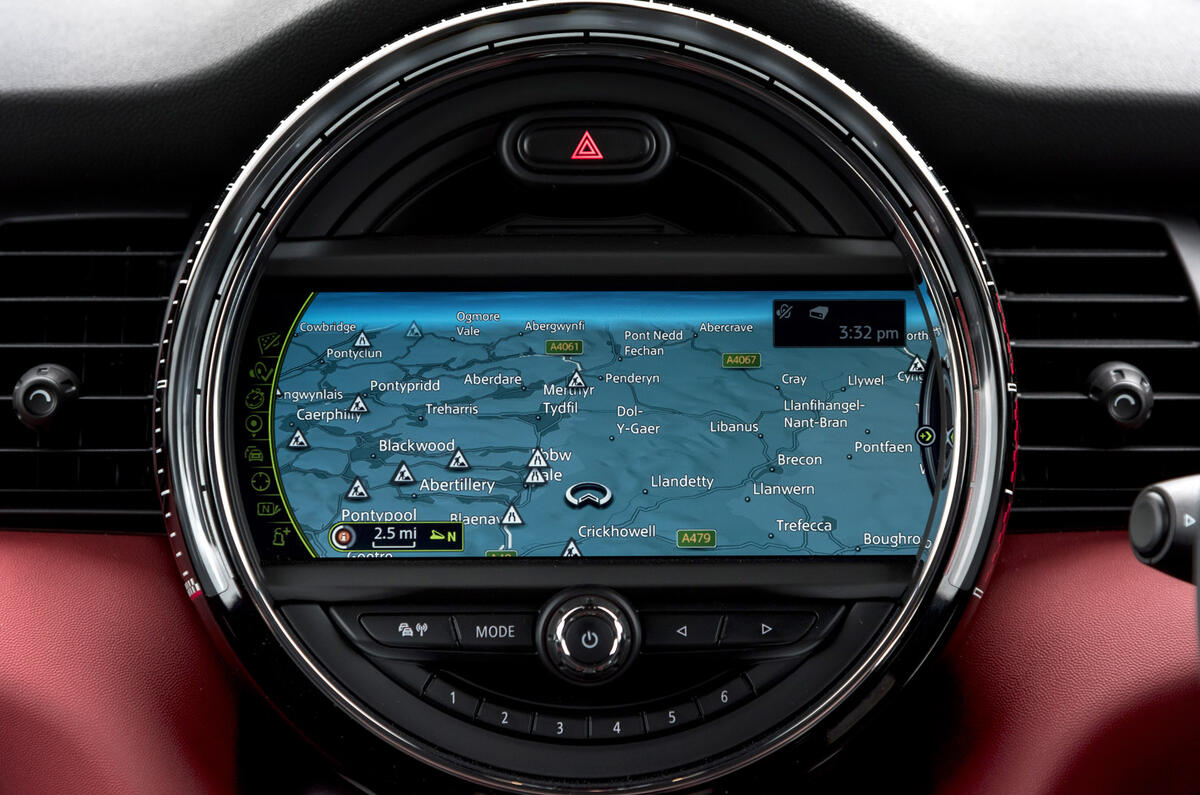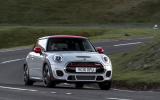The Mini John Cooper Works name identifies the very hottest hatchbacks, crossovers, convertibles and pint-sized estates that Mini makes.
While the JCW name was the sole reserve of the hatchback, especially when it came to the second gen BMW developed car, the tradition of tuning these Minis further has extended to the Paceman, Countryman, Convertible and, in the near future, the Clubman and the 2017 Countryman.
What we have here, however, is the third generation JCW hatch - which was later handed over to Mini's in-house racing division to develop the limited-run Mini JCW Challenge.
It was also the first properly hot Mini to benefit from parent company BMW’s move from 1.6 to 2.0 litres of swept volume.
As a result, the new JCW trumps its predecessor by 10 percent on peak power and 23 percent on torque, thanks to new induction and exhaust systems, new pistons and a new turbo, which help deliver those output gains over and above the Cooper S.
The overhaul to the JCW’s running chassis and driveline is even more thorough, although, just like last Mini GP, the JCW shuns a proper mechanical limited-slip differential for a brake-actuated torque vectoring set-up.
The front suspension gets uprated springs and dampers, strengthened and lightened supports and wishbones, new tube-shaped anti-roll bars, lightweight support bearings and triple-path strut mounts. The multi-link rear suspension has also been lightened and toughened up.









